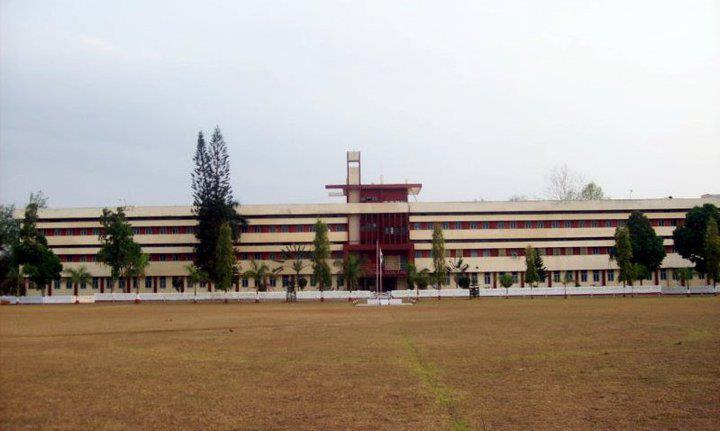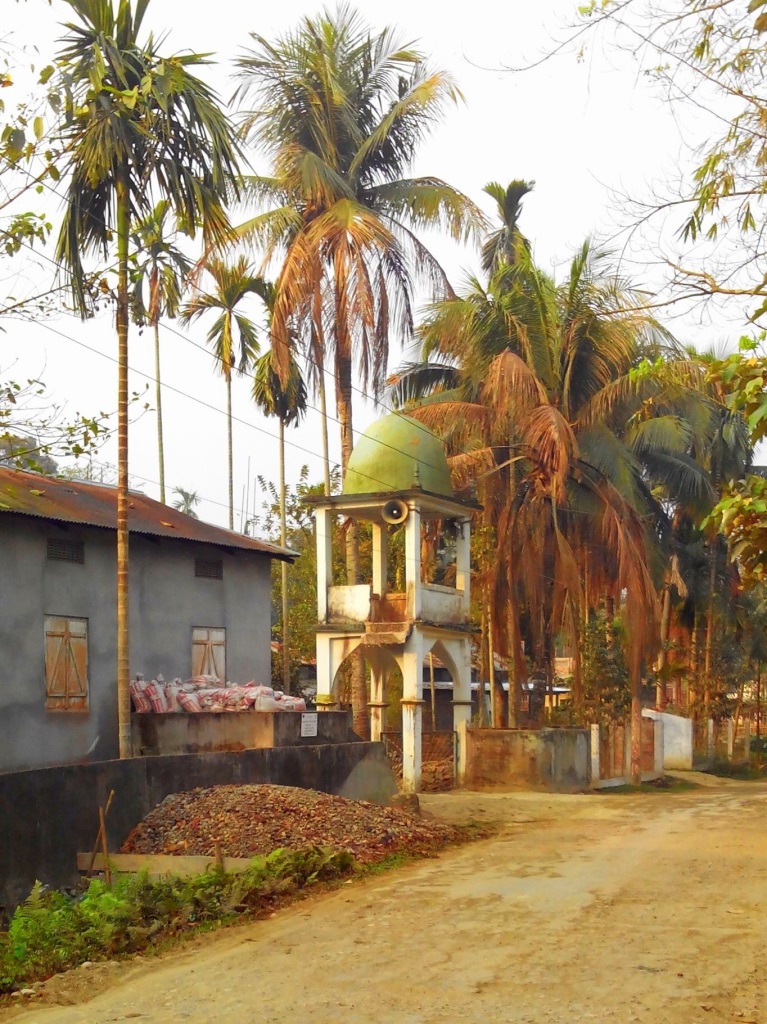|
Udayaditya Singha
Sunyatphaa also Udayaditya Singha was the king of Ahom Kingdom from 1670 CE to 1672 CE. After his elder brother Swargadeo Chakradhwaj Singha died in the middle of Ahom-Mughal war, Udayaditya Singha succeeded to the throne. His reign witnessed the end of Ahom-Mughal war, which started during the reign of Chakradhwaj Singha, when the Mughal army led by Rajput prince, Ram Singh I of Amber, was decisively defeated by the Ahom forces led by Ahom commander Lachit Borphukan in the Battle of Saraighat. The later part of his reign was characterized by the failure of military expedition against the Dafala tribes and the influence of Paramananda Sannyasi, a saintly figure from Brindaban, over Udayaditya Singha. Udayaditya's over exerted devotion towards Paramananda Sanyasi, aroused dissatisfaction among the nobles, which ultimately caused his deposition and execution. His reign was followed by a series of political anarchy and internal disturbances in the Ahom kingdom which continued till th ... [...More Info...] [...Related Items...] OR: [Wikipedia] [Google] [Baidu] |
Chao Pha
Chao-Pha (; Tai Ahom: 𑜋𑜧𑜨 𑜇𑜡, th, เจ้าฟ้า}, shn, ၸဝ်ႈၾႃႉ, translit=Jao3 Fa5 Jao3 Fa5, my, စော်ဘွား ''Sawbwa,'' ) was a royal title used by the hereditary rulers of the Tai peoples of Mong Dun, Mong Shan, Mong Mao, kingdoms of Thai and Tai-Khamti people. According to local chronicles, some fiefdoms of Chao-Pha date from as early as the 2nd century BCE; however, the earlier sections of these chronicles are generally agreed to be legendary. Overview During British colonial rule, there were 14 to 16 Chao-Phas at a time, each ruling a highly autonomous state, until 1922 when the Federated Shan States were formed and the Chao-Phas powers were reduced. However, they nominally kept their positions as well as their courts and still played a role in local administration until they collectively relinquished their titles in favour of the Union of Burma in 1959. Shan is the semi-independent Shan States (Muang, shn, my-Mymr, � ... [...More Info...] [...Related Items...] OR: [Wikipedia] [Google] [Baidu] |
Kachari Kingdom
The Dimasa Kingdom (also Kachari kingdom) was a late medieval/early modern kingdom in Assam, Northeast India ruled by Dimasa kings. The Dimasa kingdom and others (Kamata, Chutiya) that developed in the wake of the Kamarupa kingdom were examples of new states that emerged from indigenous communities in medieval Assam as a result of socio-political transformations in these communities. The British finally annexed the kingdom: the plains in 1832 and the hills in 1834. This kingdom gave its name to undivided Cachar district of colonial Assam. And after independence the undivided Cachar district was split into three districts in Assam: Dima Hasao district (formerly ''North Cachar Hills''), Cachar district, Hailakandi district. The Ahom Buranjis called this kingdom ''Timisa''. In the 18th century, a divine Hindu origin was constructed for the rulers of the Kachari kingdom and it was named Hidimba, and the kings as Hidimbesvar. The name Hiḍimbā continued to be used in the offic ... [...More Info...] [...Related Items...] OR: [Wikipedia] [Google] [Baidu] |
Goalpara
Goalpara, Pron: ) is the district headquarters of Goalpara district, Assam, India. It is situated to the west of Guwahati. Etymology The name Goalpara is said to have originated from the word "Gwaltippika" meaning Guwali village, or The village of the milk men (Yadav). In local dialect, "para" means village. Geography Goalpara is located on the bank of the river Brahmaputra River, Brahmaputra. It has an average elevation of 35 metres (114 feet). Goalpara is endowed with scenic beauty. Hulukanda Hill, located at the heart of Goalpara on the bank of the Brahmaputra river, is one of the natural scenic views in the town, with various kinds of waterfowl and monkeys. There are some other bodies of water such as Hashila beel, Kumri beel, and Urpad Beel. The Urpad Beel becomes the centre of migratory birds during Oct-March. The evergreen forests on low hills create an undulating landscape. Goalpara district consists of 8 blocks: *Balijana *Jaleswar *Kharmuza *Krishnai *Ku ... [...More Info...] [...Related Items...] OR: [Wikipedia] [Google] [Baidu] |
Kamrup District
Kamrup Rural district, or simply Kamrup district (Pron: ˈkæmˌrəp or ˈkæmˌru:p), is an administrative district in the state of Assam in India formed by dividing the old Kamrup district into two in the year 2003; other being Kamrup Metropolitan district, named after the region it constitutes. This district, along with Nalbari, Barpeta, Kamrup Metropolitan, Bajali and Baksa districts has been created from the Undivided Kamrup district. History Kamrup Rural district was created by bifurcating Undivided Kamrup district in 2003. The Government of Assam, during the Chief-ministership of Late Tarun Gogoi, had proposed to bifurcate it further and create a new district, named South Kamrup. In 2016, the process of creation of the district was started. However, later that year, the process of creation was stopped midway due to lack of infrastructure. Geography and environment Overview Kamrup district occupies an area of . Kamrup district has some territorial disputes with neighbo ... [...More Info...] [...Related Items...] OR: [Wikipedia] [Google] [Baidu] |
Brahmaputra
The Brahmaputra is a trans-boundary river which flows through Tibet, northeast India, and Bangladesh. It is also known as the Yarlung Tsangpo in Tibetan, the Siang/Dihang River in Arunachali, Luit in Assamese, and Jamuna River in Bangla. It is the 9th largest river in the world by discharge, and the 15th longest. With its origin in the Manasarovar Lake region, near Mount Kailash, on the northern side of the Himalayas in Burang County of Tibet where it is known as the Yarlung Tsangpo River, It flows along southern Tibet to break through the Himalayas in great gorges (including the Yarlung Tsangpo Grand Canyon) and into Arunachal Pradesh. It flows southwest through the Assam Valley as the Brahmaputra and south through Bangladesh as the Jamuna (not to be confused with the Yamuna of India). In the vast Ganges Delta, it merges with the Ganges, popularly known as the Padma in Bangladesh, and becomes the Meghna and ultimately empties into the Bay of Bengal. About long, the Bra ... [...More Info...] [...Related Items...] OR: [Wikipedia] [Google] [Baidu] |
Aurangzeb
Muhi al-Din Muhammad (; – 3 March 1707), commonly known as ( fa, , lit=Ornament of the Throne) and by his regnal title Alamgir ( fa, , translit=ʿĀlamgīr, lit=Conqueror of the World), was the sixth emperor of the Mughal Empire, ruling from July 1658 until his death in 1707. Under his emperorship, the Mughals reached their greatest extent with their territory spanning nearly the entirety of South Asia. Widely considered to be the last effective Mughal ruler, Aurangzeb compiled the Fatawa 'Alamgiri and was amongst the few monarchs to have fully established Sharia and Islamic economics throughout South Asia.Catherine Blanshard Asher, (1992"Architecture of Mughal India – Part 1" Cambridge university Press, Volume 1, Page 252. Belonging to the aristocratic Timurid dynasty, Aurangzeb's early life was occupied with pious pursuits. He held administrative and military posts under his father Shah Jahan () and gained recognition as an accomplished military commander. Aurang ... [...More Info...] [...Related Items...] OR: [Wikipedia] [Google] [Baidu] |
Mughals
The Mughal Empire was an early-modern empire that controlled much of South Asia between the 16th and 19th centuries. Quote: "Although the first two Timurid emperors and many of their noblemen were recent migrants to the subcontinent, the dynasty and the empire itself became indisputably Indian. The interests and futures of all concerned were in India, not in ancestral homelands in the Middle East or Central Asia. Furthermore, the Mughal empire emerged from the Indian historical experience. It was the end product of a millennium of Muslim conquest, colonization, and state-building in the Indian subcontinent." For some two hundred years, the empire stretched from the outer fringes of the Indus River, Indus river basin in the west, northern Afghanistan in the northwest, and Kashmir in the north, to the highlands of present-day Assam and Bangladesh in the east, and the uplands of the Deccan Plateau in South India. Quote: "The realm so defined and governed was a vast territory of ... [...More Info...] [...Related Items...] OR: [Wikipedia] [Google] [Baidu] |
Atan Burhagohain
Atan Burhagohain was an influential 17th-century Burhagohain of the Ahom kingdom. He served as ''Rajmantri Dangaria'', the chief counsellor, for more than seventeen years, from January 1662 to March 1679. During this period Assam witnessed Mughal invasions first under Mir Jumla and later during the Battle of Saraighat against Ram Singh. During the internal disruptions that followed he played a prominent part upholding state rule but was ultimately assassinated by his adversaries. He is best known for his foresight, judgement and patriotism; and for refusing to accept the crown twice when it was offered to him. According to the Buranjis, the Burhagohain was tall in stature and his strides resembled that of a goose. His face was broad, and he had two moles on the forehead. He was ruddy in complexion. He wore a buffalo-coloured ''gati'' or a cloth tightly wrapped round the body with two ends made into a knot near the waist and he carried a big hengdang or sword. Since he belon ... [...More Info...] [...Related Items...] OR: [Wikipedia] [Google] [Baidu] |
Guwahati
Guwahati (, ; formerly rendered Gauhati, ) is the biggest city of the Indian state of Assam and also the largest metropolis in northeastern India. Dispur, the capital of Assam, is in the circuit city region located within Guwahati and is the seat of the Government of Assam. A major riverine port city along with hills, and one of the fastest growing cities in India, Guwahati is situated on the south bank of the Brahmaputra. It is called the ''Gateway to North East India''. The ancient cities of Pragjyotishpura and Durjaya (North Guwahati) were the capitals of the ancient state of Kamarupa. Many ancient Hindu temples like the Kamakhya Temple, Ugratara Devalaya, Ugratara Temple, Basistha Temple, Doul Govinda Temple, Umananda Temple, Navagraha temples#Navagraha Temple in Assam, Navagraha Temple, Sukreswar Temple, Rudreswar Temple, Manikarneswar Temple, Aswaklanta Temple, Dirgheshwari temple, Dirgheshwari Temple, Asvakranta Temple, Lankeshwar Temple, Bhubaneswari Temple, Shree Gane ... [...More Info...] [...Related Items...] OR: [Wikipedia] [Google] [Baidu] |
Sukhaamphaa
Sukhaamphaa also known as Khora roja (1552–1603) was a king of the Ahom kingdom of medieval Assam. He ruled for a period of fifty one years, the longest in the Ahom dynasty. Very fond of sports, he fell off an elephant soon after his ascension and the injury gave him a limp, and as a result the Buranjis often called him the Khora roja. Ascension and general rule Sukhaamphaa became the king of the Ahom kingdom after his father, Suklenmung, died. He was particularly fond of sports and personally took part in elephant catching expeditions (''khedda''). Unlike during his father's rule when Sankardev and Madhavdev had to flee the kingdom, the disciples of Madhavdev could come and establish centers of Ekasarana Dharma and it was during Sukhaamphaa's reign that the religion took firm root and began to flourish. Many common folks as well as high officials of the kingdom took initiation in this religion, a development with remarkable consequences. Wars With the Koch A dispute i ... [...More Info...] [...Related Items...] OR: [Wikipedia] [Google] [Baidu] |
.png)




